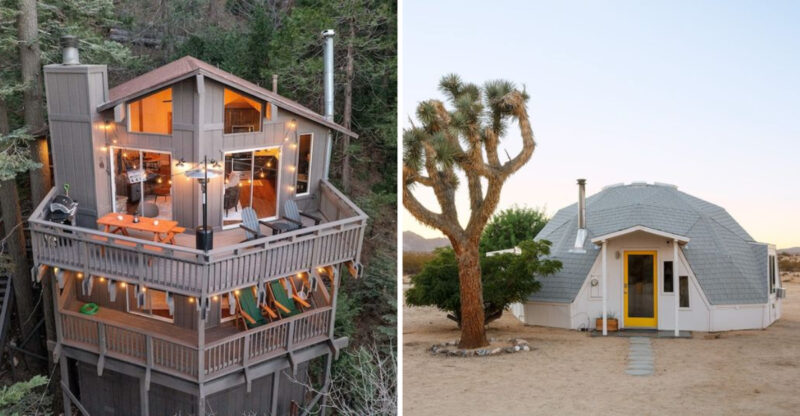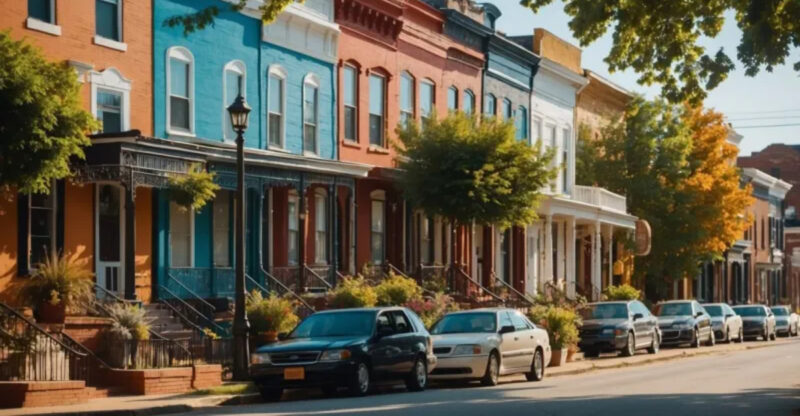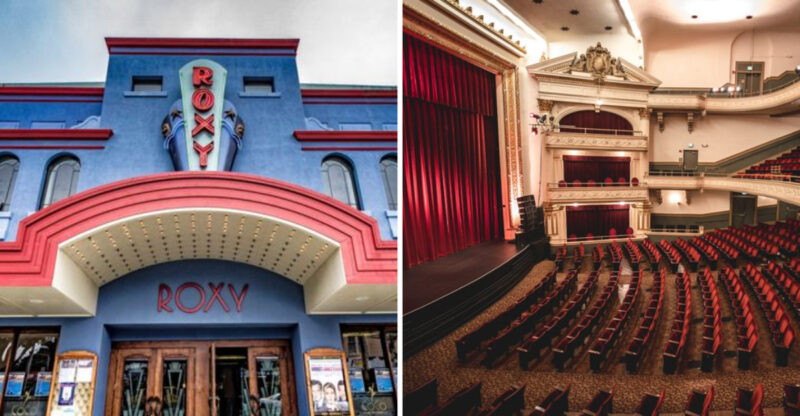26 Reasons Charleston Might Be The South’s Most Captivating City

Charleston, South Carolina, has a way of stealing hearts with its cobblestone streets, moss-draped oaks, and warm coastal breezes. From historic landmarks to mouthwatering cuisine, this Southern gem offers countless experiences that make it truly unforgettable.
Whether you’re drawn to its rich past, vibrant culture, or stunning scenery, Charleston delivers something special at every turn.
1. Rich Historical Roots Dating Back Centuries

Founded in 1670, Charleston carries stories from nearly four centuries ago. Walking through its streets feels like stepping into a living history book where every building whispers tales of the past.
The historic district spans two square miles and contains over 800 preserved structures. Architectural styles range from colonial to Victorian, each reflecting different periods of American history.
Preservation efforts have kept the city’s character intact, allowing visitors to experience authentic Southern heritage. Churches, homes, and public buildings stand as testaments to the craftsmanship and vision of earlier generations.
2. Rainbow Row’s Colorful Charm
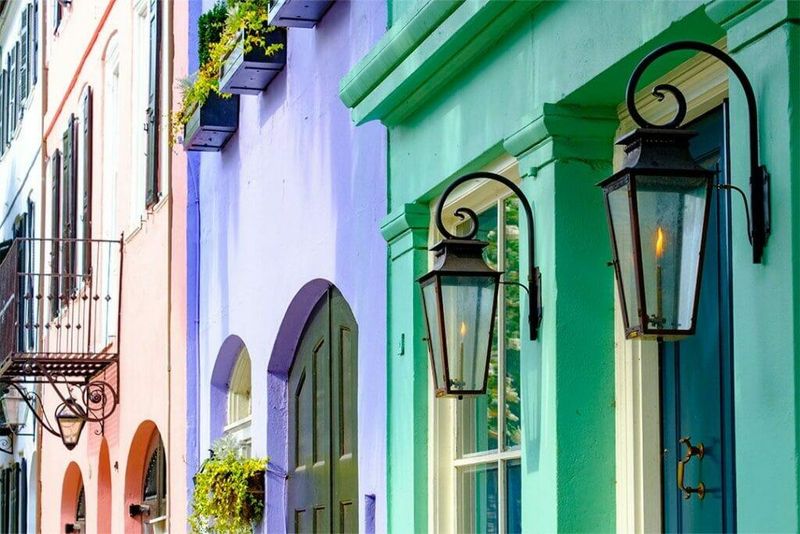
Picture thirteen pastel houses lined up like a box of watercolor paints. Rainbow Row represents one of Charleston’s most photographed landmarks, and for good reason the colors pop against the blue sky.
These Georgian-style homes date back to the mid-1700s and were restored in the 1930s and 1940s. Each building received its distinct shade, creating a cheerful streetscape that symbolizes Charleston’s commitment to preserving beauty.
Tourists flock here for photos, but locals appreciate how these homes reflect the city’s artistic spirit. The pastel palette has become iconic, appearing on postcards and travel guides worldwide.
3. Lowcountry Cuisine That Melts In Your Mouth
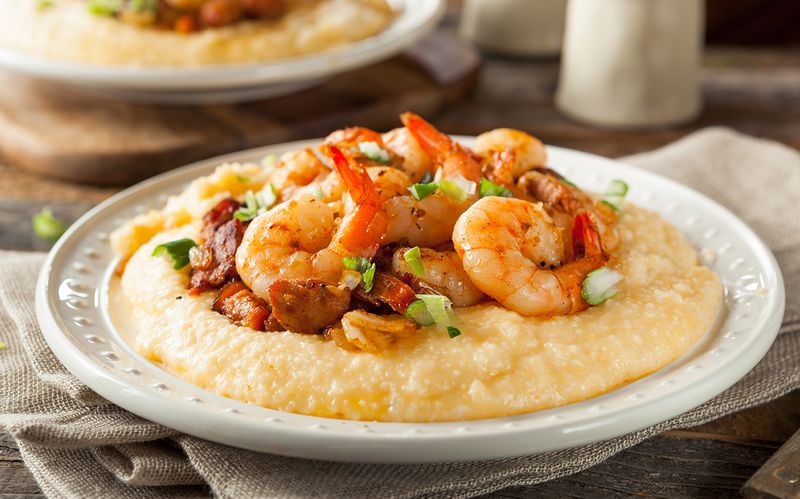
When you taste authentic shrimp and grits or she-crab soup, you’ll understand why Charleston earned its reputation as a food lover’s paradise. Lowcountry cooking blends coastal seafood, African traditions, and Southern comfort into unforgettable flavors.
Fresh catches from nearby waters appear on menus daily. Chefs honor traditional recipes while adding creative twists that surprise your taste buds.
From casual fish shacks to upscale dining rooms, every meal tells a story. Local ingredients shine in dishes that have been perfected over generations, making each bite a celebration of regional culture and culinary expertise.
4. Spoleto Festival USA Brings World-Class Performances
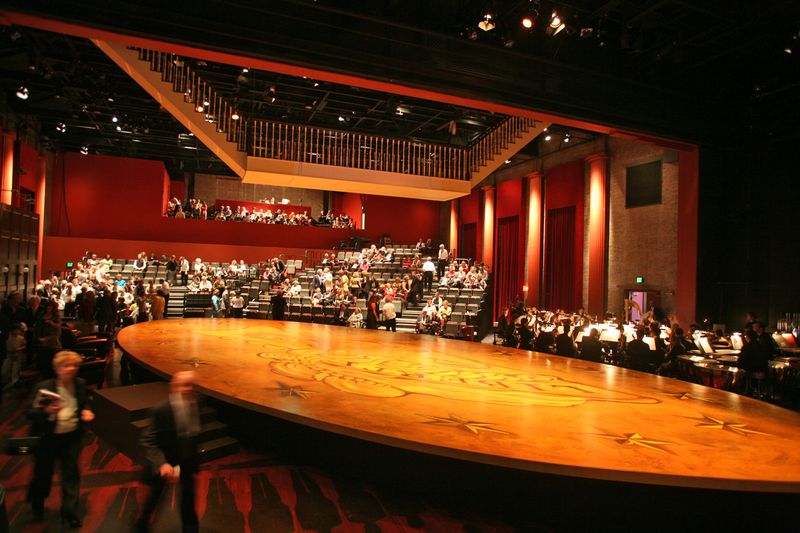
Every spring, Charleston transforms into an international stage for seventeen days of artistic brilliance. Spoleto Festival USA attracts opera singers, dancers, and theater performers from around the globe.
Founded in 1977, this festival has become one of America’s premier performing arts events. Venues throughout the city host over 100 performances ranging from classical to contemporary works.
Whether you’re watching ballet under the stars or attending an avant-garde play, Spoleto offers cultural experiences rarely found in cities this size. The festival proves Charleston’s commitment to supporting the arts and enriching community life through creative expression.
5. The Battery’s Stunning Waterfront Views
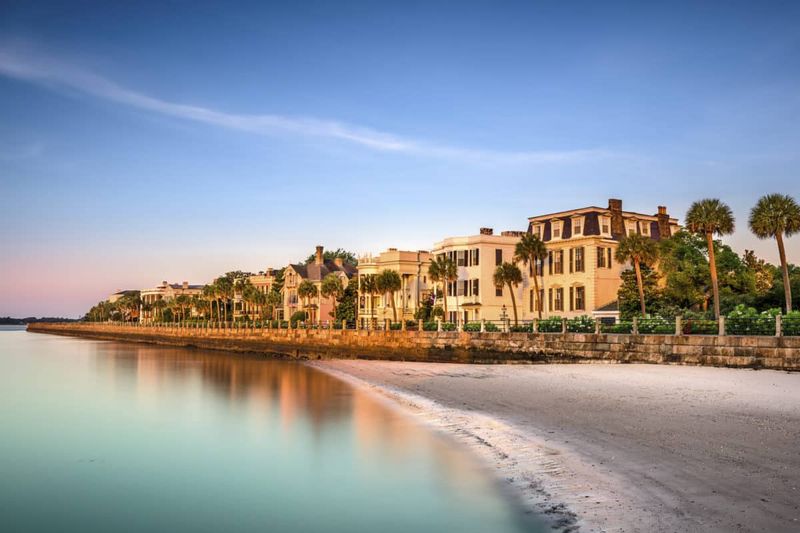
Standing at The Battery, you’ll watch sailboats glide across Charleston Harbor while historic mansions tower behind you. This defensive seawall turned promenade offers some of the city’s most breathtaking scenery.
Built to protect against storms and invaders, The Battery now serves as a peaceful gathering spot. Oak trees draped with Spanish moss provide shade for afternoon strolls.
Cannons and monuments dot the landscape, reminding visitors of the area’s military significance. Photographers love capturing sunsets here, where water meets sky in spectacular displays of orange and pink hues that paint the horizon.
6. Dock Street Theatre’s Historic Stage
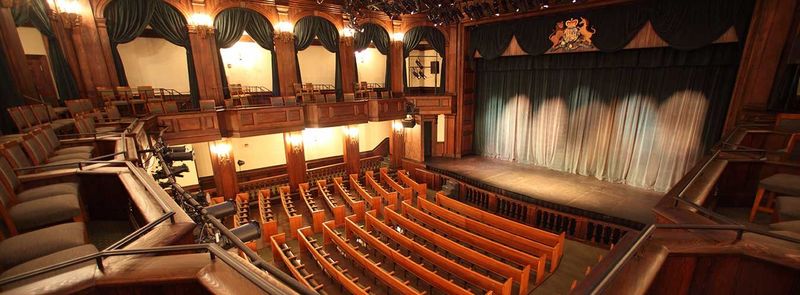
Did you know America’s first theater opened right here in Charleston? Dock Street Theatre has been entertaining audiences since 1736, though the current building dates from the 1930s restoration.
The venue hosts over 100 performances annually, from classic plays to modern productions. Ornate balconies and period details transport theatergoers to another era.
Charleston Stage calls this historic space home, producing shows that range from Shakespeare to contemporary works. Attending a performance here connects you to centuries of American theatrical tradition while enjoying top-notch acting and production values.
7. Southern Hospitality That Feels Like Home
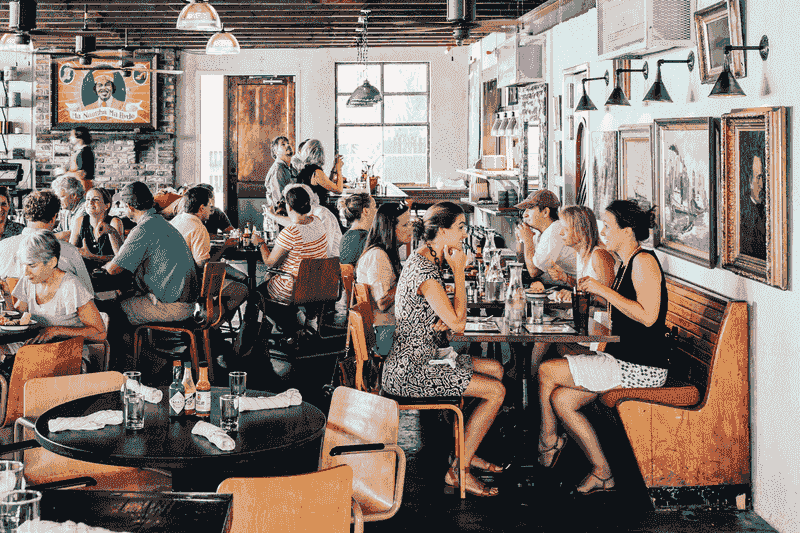
There’s something genuinely warm about how Charleston residents greet strangers. Southern hospitality isn’t just a saying here it’s a way of life practiced daily by locals who take pride in making visitors feel welcome.
Shop owners remember your name after one visit. Neighbors chat on porches during evening walks.
Strangers offer directions with detailed explanations and friendly smiles. This welcoming atmosphere stems from deep-rooted traditions of courtesy and kindness passed down through generations. You’ll leave feeling like you’ve made friends rather than simply toured a city, which keeps travelers returning year after year.
8. Sullivan’s Island Beach Escape
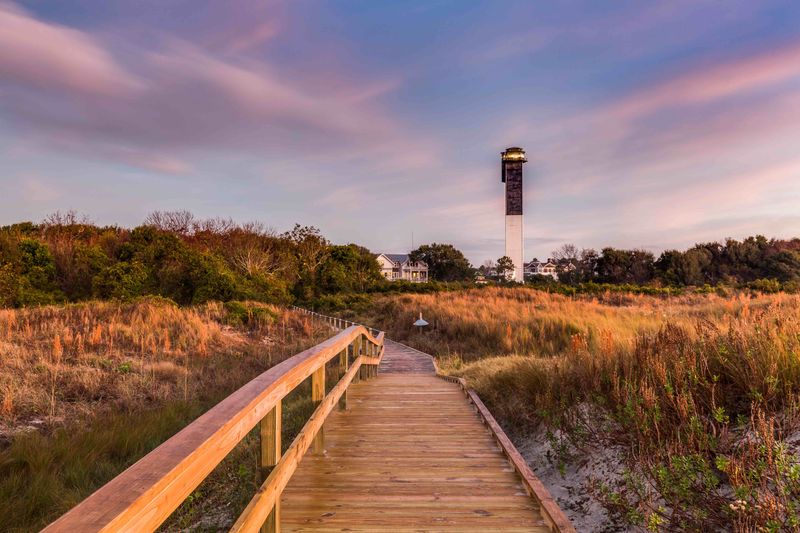
Just twenty minutes from downtown, Sullivan’s Island offers pristine beaches without the commercial development found elsewhere. Soft sand stretches for miles, perfect for barefoot walks and sandcastle building.
Families spread blankets while surfers catch waves in the Atlantic. The lighthouse stands as a distinctive landmark, guiding both ships and beachgoers.
Unlike crowded tourist beaches, Sullivan’s maintains a relaxed, residential vibe. Local restaurants serve fresh seafood within walking distance of the shore. Whether you’re seeking solitude or family fun, this barrier island provides the perfect coastal retreat from city life.
9. Folly Beach’s Laid-Back Surf Culture
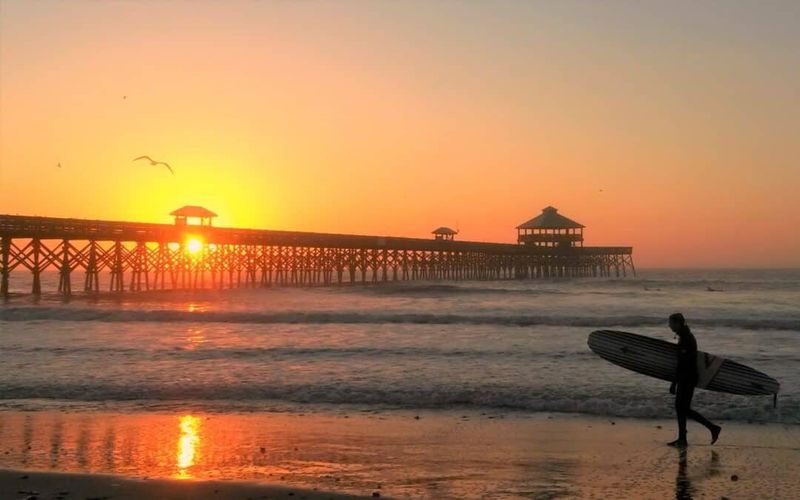
Known as the Edge of America, Folly Beach embraces a bohemian spirit that contrasts with Charleston’s refined downtown. Surfers paddle out year-round, catching waves that roll in from the Atlantic.
The fishing pier extends 1,045 feet into the ocean, attracting anglers hoping for big catches. Colorful shops and casual eateries line Center Street.
Beach bars host live music where locals and visitors mingle over cold drinks. Folly’s unpretentious atmosphere appeals to those seeking authentic coastal living rather than resort glamour. Sand between your toes and salt in the air define this beloved beach community.
10. Magnolia Plantation’s Breathtaking Gardens
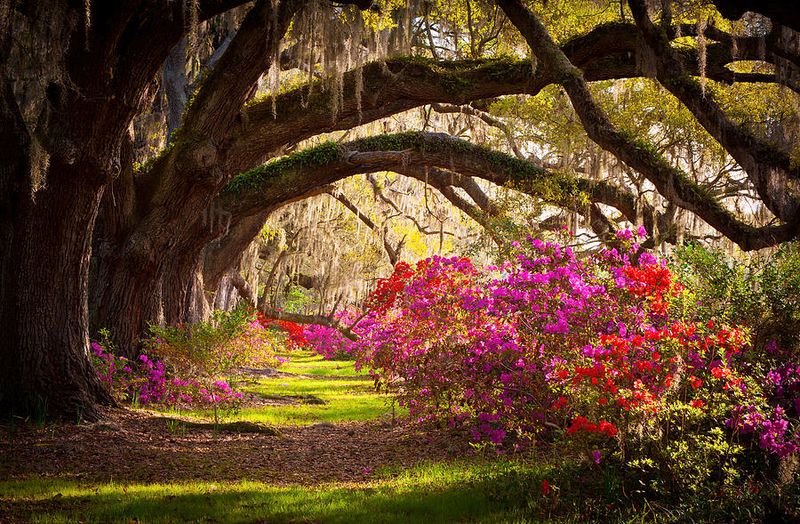
America’s oldest public gardens bloom with color across Magnolia Plantation’s grounds. Founded in 1676, these gardens have evolved into a horticultural masterpiece featuring azaleas, camellias, and countless other species.
Walking paths wind through romantic settings where bridges cross peaceful waterways. Spring brings explosive blooms that transform the landscape into a painter’s dream.
Beyond gardens, the plantation offers historical tours that examine both the grandeur and the difficult truths of Southern history. Nature lovers appreciate the wildlife refuge where alligators sun themselves and herons fish in tranquil ponds surrounded by ancient trees.
11. Boone Hall Plantation’s Avenue of Oaks
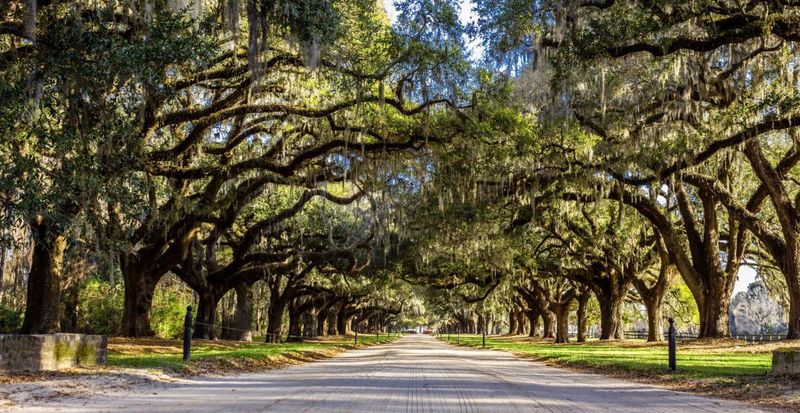
Driving down Boone Hall’s Avenue of Oaks feels like entering a Southern fairytale. Oak trees planted in 1743 form a majestic canopy over the entrance road, their branches heavy with Spanish moss.
The plantation dates back to 1681, making it one of America’s oldest working farms. Visitors explore historic slave cabins that tell important stories about the people who lived and worked here.
Tours cover both agricultural history and the complex realities of plantation life. Seasonal events include strawberry picking and pumpkin patches, connecting modern families to agricultural traditions while acknowledging the past.
12. Award-Winning Restaurants Earning National Recognition

Charleston’s culinary scene punches well above its weight class. Restaurants like Husk, FIG, and Magnolias have earned James Beard Awards and national acclaim for their innovative approaches to Southern cooking.
Chefs source ingredients from local farms and waters, creating menus that change with the seasons. Farm-to-table isn’t just a trend here it’s a philosophy.
Dining experiences range from elegant tasting menus to reimagined comfort food served in historic buildings. Food critics regularly rank Charleston among America’s top food cities, drawing culinary tourists who plan entire trips around restaurant reservations and tasting adventures.
13. Antebellum Mansions Showcasing Architectural Grandeur

South of Broad neighborhood contains some of Charleston’s most impressive antebellum mansions. These stately homes feature grand columns, intricate ironwork, and architectural details that showcase wealth and craftsmanship from the 1800s.
Double porches, called piazzas, catch cooling breezes off the harbor. Hidden courtyards bloom with flowers behind wrought iron gates.
Many homes remain private residences, though some open for tours during festival seasons. Walking these streets reveals how Charleston’s elite lived before the Civil War, with buildings that have survived hurricanes, wars, and time itself through careful preservation.
14. Carriage Rides Through Historic Streets
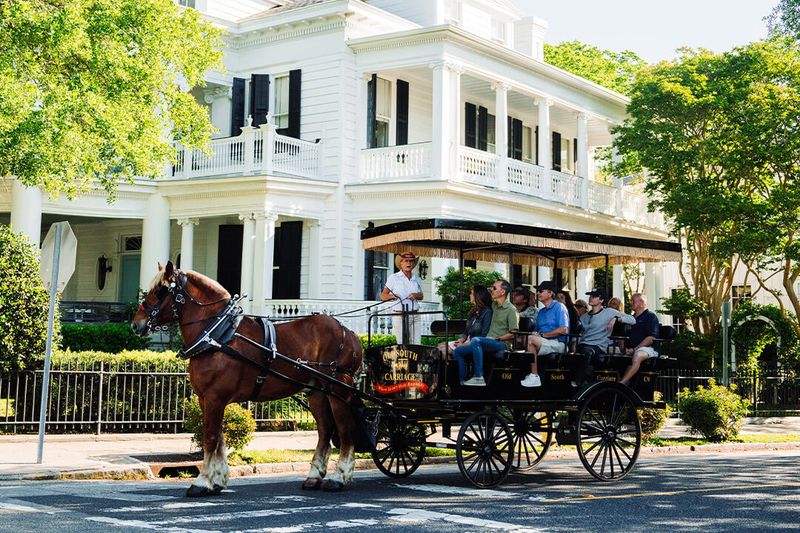
Clip-clop sounds echo off historic buildings as carriage horses pull tourists through Charleston’s oldest neighborhoods. These tours offer a relaxed way to absorb history while guides share stories and point out architectural details.
Different routes cover various districts, from the French Quarter to the Battery. Horses wear hats and move at a leisurely pace.
Guides trained in local history make the experience educational and entertaining. Evening rides provide romantic atmospheres as gas lamps flicker to life. Though touristy, carriage rides remain a quintessential Charleston experience that helps visitors understand the city’s layout and heritage.
15. City Market’s Artisan Crafts and Local Flavor
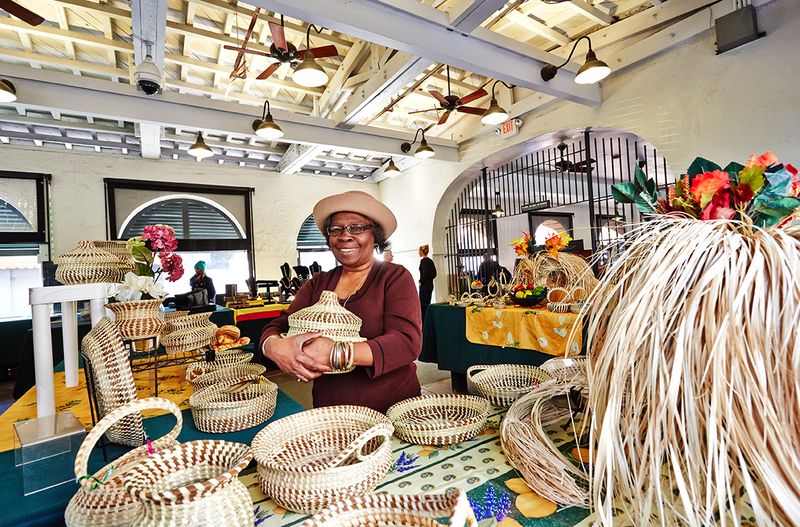
Since the 1790s, City Market has served as Charleston’s commercial heart. Today, vendors sell everything from sweetgrass baskets to local artwork under the historic shed roofs.
Sweetgrass basket weaving represents a tradition brought from West Africa centuries ago. Watching artisans work is mesmerizing as they coil and stitch intricate patterns.
Beyond crafts, you’ll find local foods, jewelry, and souvenirs. The market buzzes with activity as tourists and locals browse stalls that stretch for several blocks. Street performers add entertainment while the atmosphere captures Charleston’s blend of commerce, culture, and community gathering.
16. Fort Sumter’s Pivotal Civil War History
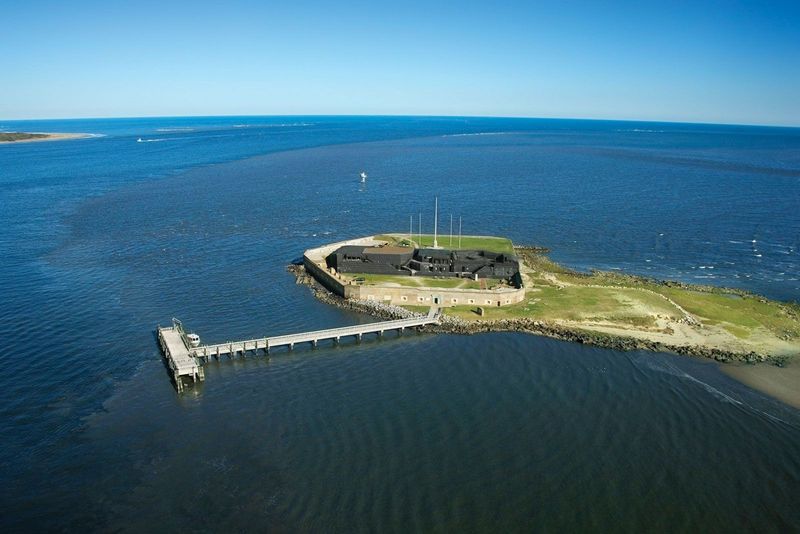
Where did the Civil War begin? Right here at Fort Sumter, where Confederate forces fired the first shots in 1861. Reaching this island fort requires a ferry ride across Charleston Harbor.
Park rangers explain the events that sparked America’s bloodiest conflict. Original cannons and fortification walls remain, though battle damage is still visible.
The museum displays artifacts and tells stories from both Union and Confederate perspectives. Standing where history changed course creates powerful moments of reflection. Views back toward Charleston from the fort offer unique perspectives of the city skyline across the water.
17. Waterfront Park’s Pineapple Fountain

Kids squeal with delight as they run through the Pineapple Fountain’s spray on hot summer days. This waterfront gathering spot combines beauty and fun in equal measure along Charleston Harbor.
The pineapple symbolizes hospitality in Southern tradition, making it the perfect centerpiece. Benches and swings offer rest spots with harbor views.
Landscaped gardens bloom with seasonal flowers while walking paths connect different park sections. Locals come here for morning jogs, lunch breaks, and evening strolls. The fountain lights up at night, creating magical reflections on the water that make it a favorite spot for proposals and family photos.
18. King Street Shopping From Antiques to Fashion
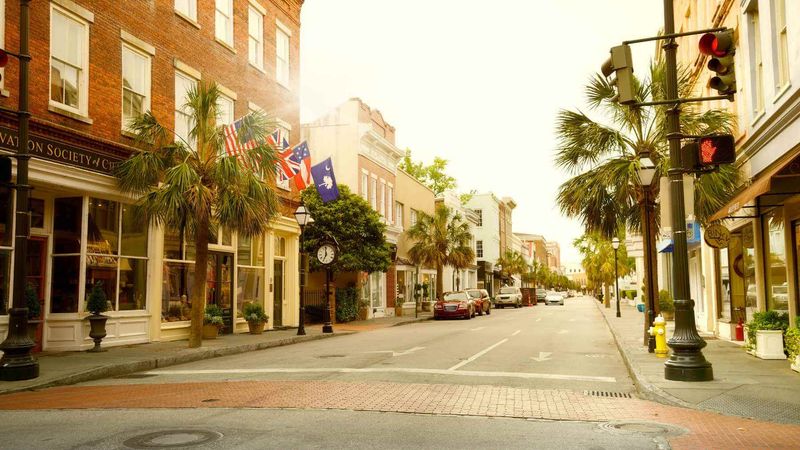
Stretching for miles, King Street satisfies every shopping desire. Upper King features trendy boutiques and local designers. Middle King houses national retailers in historic buildings.
Lower King specializes in antiques and home decor that reflect Charleston’s refined taste. Art galleries showcase local and regional artists.
Walking the entire street takes hours if you stop to browse. Restaurants and cafes provide breaks between shopping sessions. The mix of old and new, local and national, creates a retail experience that feels distinctly Charleston while offering modern convenience and variety for every budget and style preference.
19. St. Michael’s Church and Its Historic Bells
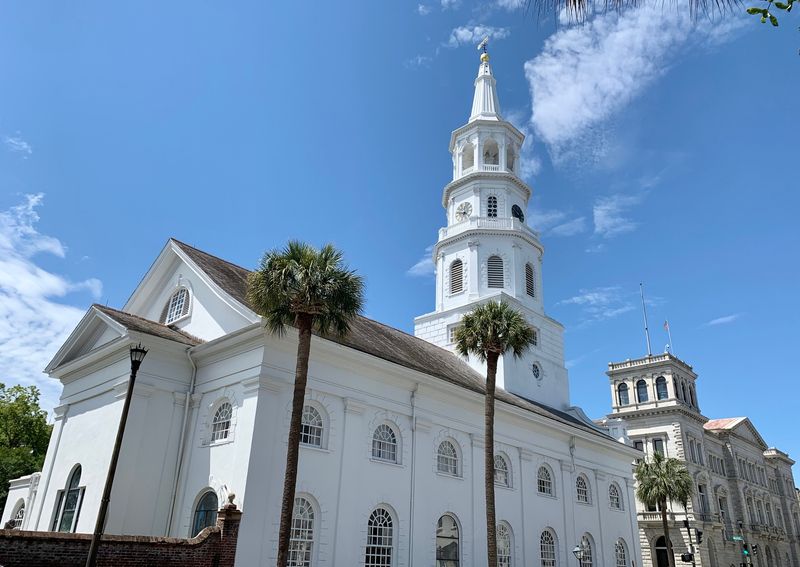
Built between 1752 and 1761, St. Michael’s Episcopal Church represents Charleston’s oldest surviving church building. The white steeple pierces the skyline, visible from miles away as a navigation landmark.
Church bells imported from England have rung through wars and hurricanes. During the Revolutionary War, British forces seized them.
The bells returned, only to be sent to Columbia during the Civil War for safekeeping. Today, they still call worshippers to service. The churchyard contains graves of important historical figures. Architectural details showcase colonial craftsmanship that has endured for over 250 years of Charleston history.
20. Ghost Tours Revealing Spooky Stories
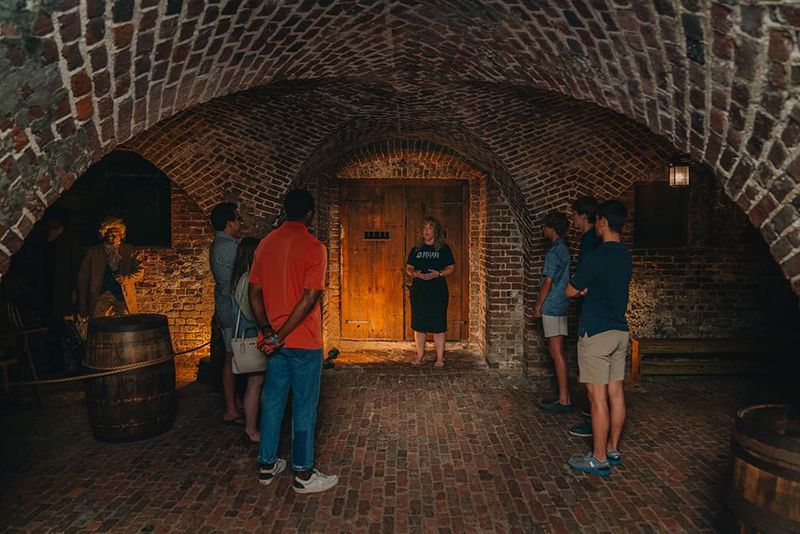
Are you brave enough to explore Charleston’s haunted side? Ghost tours lead groups through shadowy alleys while guides share spine-tingling tales of spirits and unexplained phenomena.
The Old City Jail, pirate hangings, and tragic love stories provide material for these after-dark adventures. Guides blend history with folklore.
Some tours focus on cemeteries, others on haunted houses. Whether you believe in ghosts or not, these experiences offer entertaining ways to learn about Charleston’s darker history. The atmospheric setting of gas-lit streets and ancient buildings makes even skeptics feel a chill down their spines.
21. Middleton Place’s Formal Gardens and History
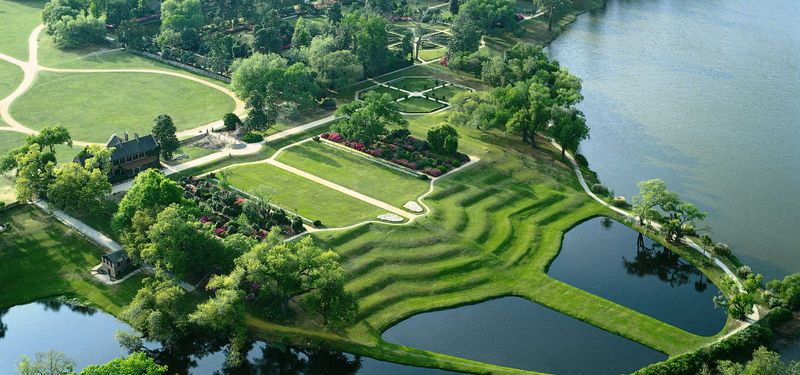
America’s oldest landscaped gardens spread across Middleton Place in geometric perfection. Created in 1741, these gardens reflect European design principles adapted to the Lowcountry landscape.
Terraced lawns descend toward butterfly lakes shaped like wings. Camellias and azaleas bloom in carefully planned displays.
Beyond gardens, the property includes a house museum and stableyards where craftspeople demonstrate historical trades. The site honestly addresses plantation history, including the enslaved people who created and maintained these grounds. Educational programs explore both horticultural beauty and the complex human stories woven through this National Historic Landmark.
22. Charleston Harbor Boat Tours and Cruises
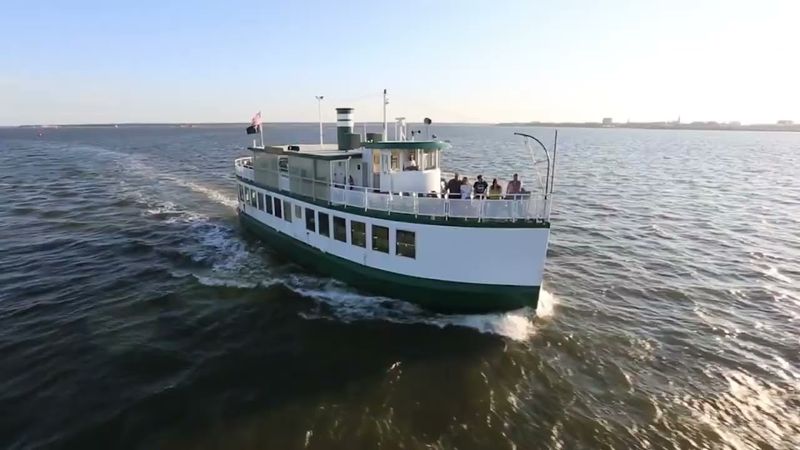
Seeing Charleston from the water provides perspectives impossible from land. Harbor tours cruise past Fort Sumter, under the Ravenel Bridge, and along historic waterfronts while guides narrate the city’s maritime heritage.
Dolphins often swim alongside boats, delighting passengers. Sunset cruises offer romantic settings as the sky turns brilliant colors.
Private charters and large tour boats cater to different preferences. You’ll understand why Charleston’s location made it such an important port city. Cool breezes and panoramic views make these excursions refreshing breaks from walking tours, especially during hot summer months when being on the water feels wonderful.
23. Arthur Ravenel Jr. Bridge’s Modern Marvel
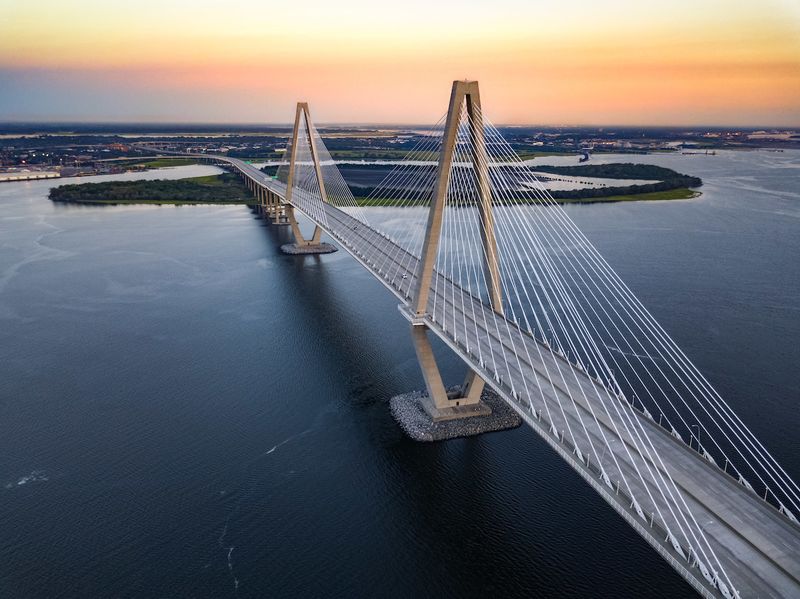
This cable-stayed bridge soars 575 feet above the Cooper River, connecting Charleston to Mount Pleasant. Opened in 2005, it replaced two older bridges with a modern engineering masterpiece.
The pedestrian and bike path offers spectacular views during sunrise and sunset. Walkers and cyclists enjoy the 2.5-mile journey across.
At night, the bridge lights up, creating a glowing landmark visible throughout the region. The design allows large ships to pass underneath while providing hurricane evacuation routes. Locals affectionately call it the Ravenel Bridge, and it’s become as iconic to modern Charleston as historic landmarks are to its past.
24. Gibbes Museum of Art’s Regional Collection
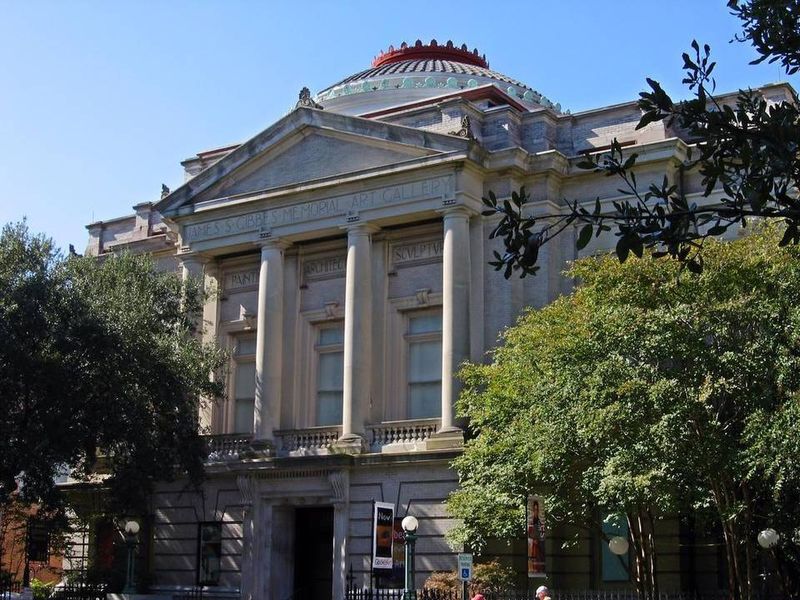
Founded in 1905, the Gibbes Museum houses an impressive collection of American art with emphasis on Charleston and Southern artists. Portraits of notable Charlestonians line the walls, creating a visual history of the city’s influential families.
Rotating exhibitions bring contemporary works alongside historical pieces. The building itself showcases Beaux-Arts architecture.
Educational programs engage all ages with art appreciation and creation. From miniature portraits to large landscapes, the collection reveals how artists have captured Charleston’s beauty and culture throughout centuries. The museum provides air-conditioned refuge during hot days while feeding your cultural curiosity.
25. Charleston Tea Plantation’s American-Grown Tea
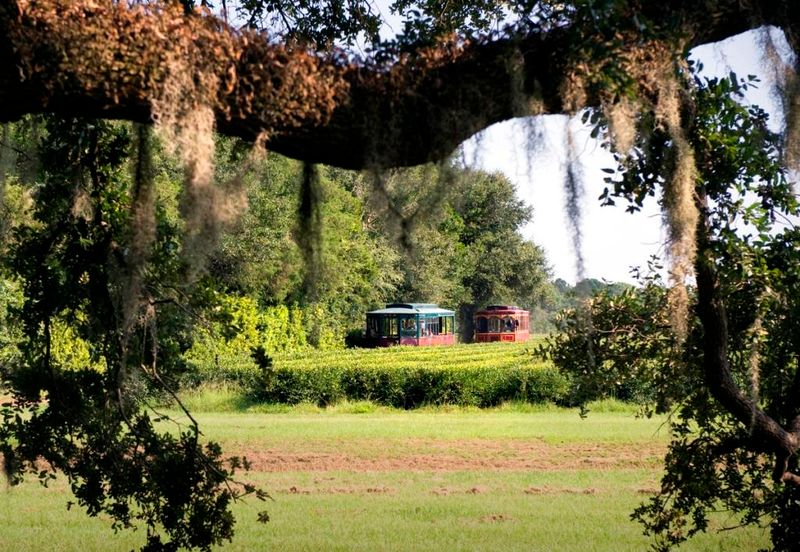
Did you know America grows tea commercially in only one place? Charleston Tea Plantation on Wadmalaw Island produces American Classic Tea from plants thriving in the Lowcountry climate.
Free tours explain how tea is grown, harvested, and processed. You’ll see fields of glossy-leafed tea plants stretching toward the horizon.
The trolley tour covers plantation history and agricultural practices. A factory tour shows modern processing equipment turning fresh leaves into the tea you brew at home. The gift shop offers samples and products. This unique agricultural attraction proves Charleston’s land supports more than just history and beauty.
26. Annual Events and Festivals Throughout the Year

Charleston’s calendar overflows with festivals celebrating food, wine, arts, and culture. The Charleston Wine + Food Festival attracts culinary enthusiasts every March. Spoleto and Piccolo Spoleto bring performing arts in late spring.
Fall features the MOJA Arts Festival highlighting African American and Caribbean culture. Holiday events transform the city with lights and seasonal charm.
Each festival offers unique experiences, from cooking demonstrations to outdoor concerts. These events showcase local talent while attracting visitors from around the world. The variety ensures there’s always something special happening, giving you reasons to return throughout the year to experience different celebrations.



